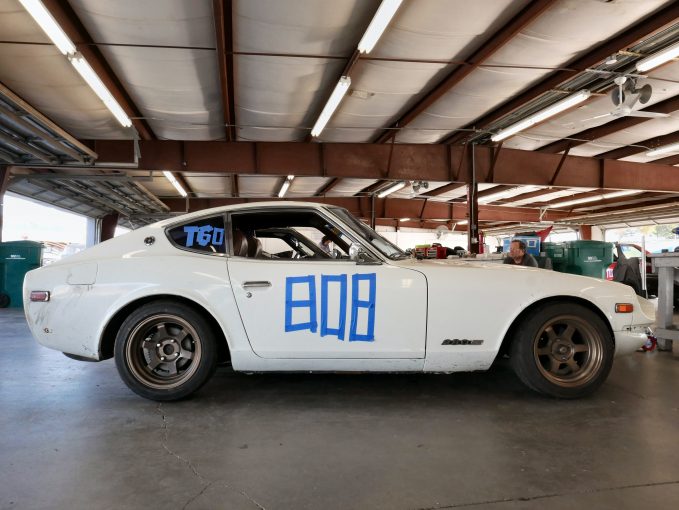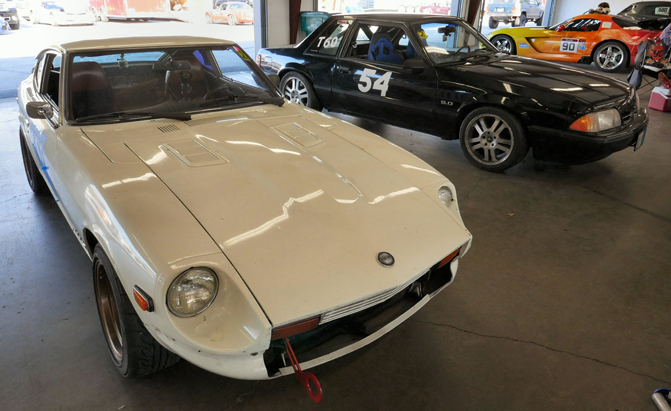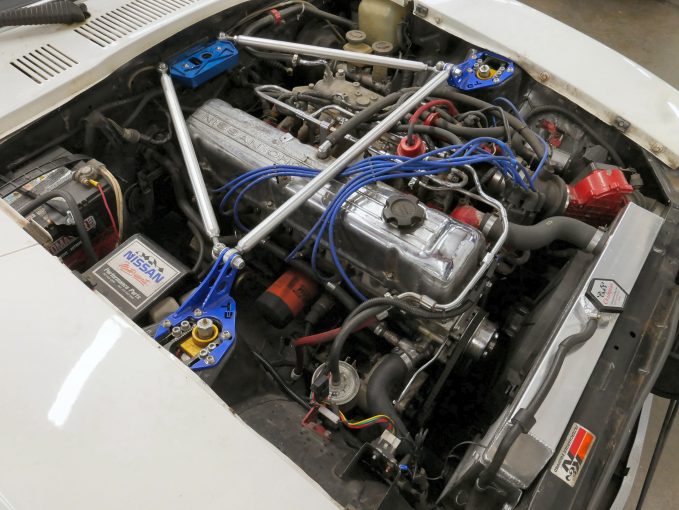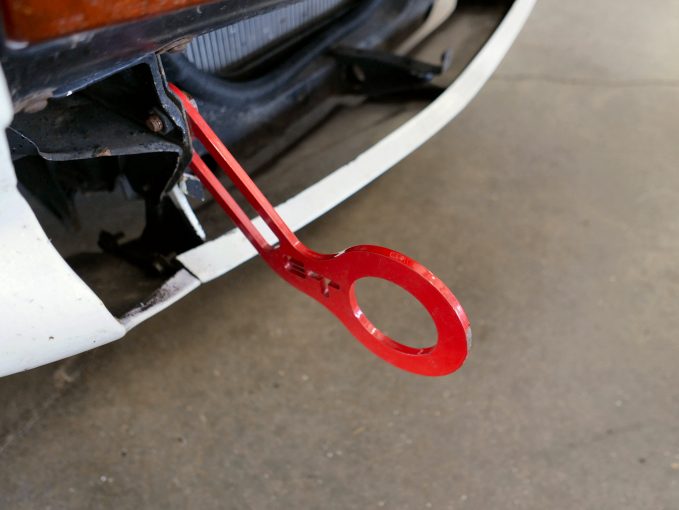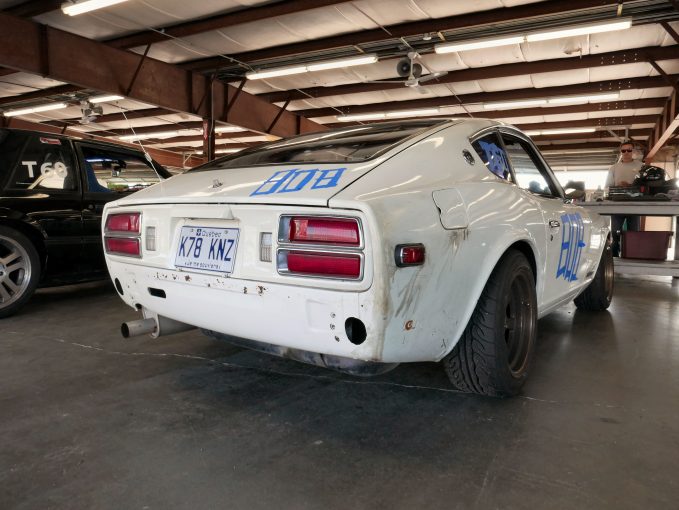Several years ago, I decided that I wanted to head in a very different direction when it came to participating in high-performance driving events and time trial competition. I parked my modern, 400-horsepower sport sedan and picked up a 1978 Datsun 280Z with the goal of transforming it into a reliable and fun track car.
My thinking was simple: since I drive brand new vehicles every day as an automotive journalist, I wanted my track toy to represent something completely outside of that experience. I also wanted a light car that would be reasonably affordable to maintain and simple to work on — and a Datsun checked off each of those boxes quite nicely.
Still, it’s definitely been a learning process. I grew up around classic cars and have owned antiques in the past, but I’ve never put them through the stress test that regular track driving represents. I made some mistakes and discovered a few surprises, but I definitely don’t regret it, as the rewards of slipping free from things like electronic stability control and power steering have been matched by the distinct pleasure that comes with showing up on pit lane in a unique vehicle.
Check out these five things I learned while driving an old car on the track.
Stuff is Going to Break and You Won’t Be Able to Predict It
Choosing to go with a Datsun was a strategic move on my part because most classic Japanese cars were built to a higher standard than their European or American counterparts. They are also typically much simpler in their execution, as the industry in Japan was still rather new in the later ’60s when the Z car was originally designed. Still, this is a 40-year-old vehicle, and that means some parts are dried out, worn, or brittle, and are going to break — and not always the ones you expect.
Before my car even went near the track, I did all of the expected maintenance items I would do even on a more modern vehicle, including replacing rubber bushings with polyurethane units, updating almost every suspension component (except for the control arms), changing the oil, the spark plugs, and even replacing the clutch because I just didn’t trust what was in the car.
ALSO SEE: 2017 Toyota 86 vs Mazda MX-5 Miata RF Track Comparison
Even with all of that, I had to deal with the unexpected. The first day on the track, the car blew a heater hose in the passenger compartment that dumped engine coolant all over the passenger footwell. The hose was old, it cracked, and that’s just what happens, but who has “heater hose” on their track day checklist? A month later, the gasket around the water pump let go, again spraying out precious coolant in the middle of a track session and requiring hours of repair in the pits that wiped out the rest of my day (but saw me able to drive 350 miles home that evening). Oh, and I’ve still got fuel pouring out the filler on certain tracks in certain corners, despite a tight seal with the gas cap (I suspect it’s a bad filler neck).
Sensing a theme here? Sometimes it’s the stuff you can’t see that has decayed over time to the point where it can no longer counted on. I’ve now got an entirely new cooling system installed in the car, including a large radiator and an electric fan, but in the back of my mind, I’m waiting for the next thing I didn’t think of to let go and park me in the garage when I’d rather be turning laps.
It’s Going to Be Loud and Uncomfortable
I don’t have a trailer or own a tow vehicle, which means I drive my car to and from the track. This translates into anywhere from three to five hours behind the wheel before and after an event. My Datsun doesn’t have air conditioning or power steering, and while its suspension is adjustable enough that the ride isn’t super rough on the highway, it does vent exhaust fumes into the cabin with the windows down (a flaw in the S30’s design).
All of this is to say that by the time I get to the track, I’m already a little tired — and then it’s four to five sessions of flat-out driving on a (sometimes) bumpy track with the suspension on a much stiffer setting and the hot weather and engine temps warming up the cabin like an oven. When the time comes to drive back home, I’m exhausted, beat up, and somewhat deafened by the car’s exhaust. Contrast that to the leather-lined, AC-blowing luxury I had access to in my last track car, and it’s quite a culture shock.
Everyone Assumes You Are Running a Swap
A funny thing happened recently when I was running in an event at New Hampshire Motor Speedway. I had given a point-by to a car that didn’t take it until the very last second, and when I spoke to him in the pits afterwards, he mentioned that I “needed to lift” to let a low-power car like his go by. I explained that my Datsun had exactly the same power and roughly the same weight as his BMW E30 325i, and he was surprised, as he had thought I was running a swap rather than the stock drivetrain.
I’d say at least half of the people I talk to about my car make a similar assumption — that I have installed an LS1, an SR20, or a 1JZ in my Datsun, or at the very least, will be doing so in the near future. I actually have no intentions of removing the stock L28 from under my hood, because I’m driving the car for the overall experience and fun factor, not to set any lap records. Still, anyone in an old car who isn’t running a swap is usually in the minority at a race track, as even the E30 crowd loves to step up to the M50/S50 for reliability and performance reasons.
Some Things You Need to Modernize, Some Things You Don’t
Although I’ve updated my Datsun to a full coilover suspension with camber plates and adjustable TC rods so I can dial-in exactly the alignment specs I’m looking for, I haven’t touched the braking system yet, other than to install stainless steel lines. This means I’m running the same single-piston calipers up front and stock drums at the back that the car came with from the factory (albeit with much better pads and shoes).
Yes, there are four-wheel, four-piston brake kits out there for the 280Z. No, I haven’t yet felt the need to install them. This is a very light car (only 2,200 lbs), which means I don’t need a lot of braking to get it to do what I need it to do on a track. Sure, I’d love better pedal feel, so maybe a new master cylinder is in order, but not every part of an old car’s design needs to be updated to meet the rigors of high-performance driving. I also have yet to touch the open rear differential or the fueling system, as both are holding up just fine.
You Have to Change the Way You Drive
It goes without saying that my Datsun doesn’t have electronic stability control or traction control, nor does it have dampers that automatically adjust themselves to driving conditions. I have to use my right foot, my hands and arms, and my brain to keep a constant watch over what the car is doing underneath me and how my inputs will affect its ability to stay pointed in the right direction and post the best possible lap time. I also have to recover the car whenever it gets out of shape without any computerized assistance, which means I can’t take a single corner “off” in terms of focus.
ALSO SEE: Top 10 Ways to Be a Better Track Driver
Surprisingly, however, it’s the lack of anti-lock braking that has been the biggest mental hurdle for me to overcome. I’ve driven track cars without it in the past, but after years in my modern performance machine — compounded by all the sports cars I have access to via my work — I had gotten very used to just braking hard on corner entry without worrying about lock-up, and concentrating more on turn-in and exit speed than anything else. I learned early on that not only is my Datsun happy to lock the wheels if I’m too abrupt with the pedal, but it will lock the left front wheel before any of the others, which introduces its own kind of destabilizing fun into the equation. Reprogramming my braking zones at tracks I’ve been driving for years with this vehicle behavior in mind has been a real challenge for me in my older car.







